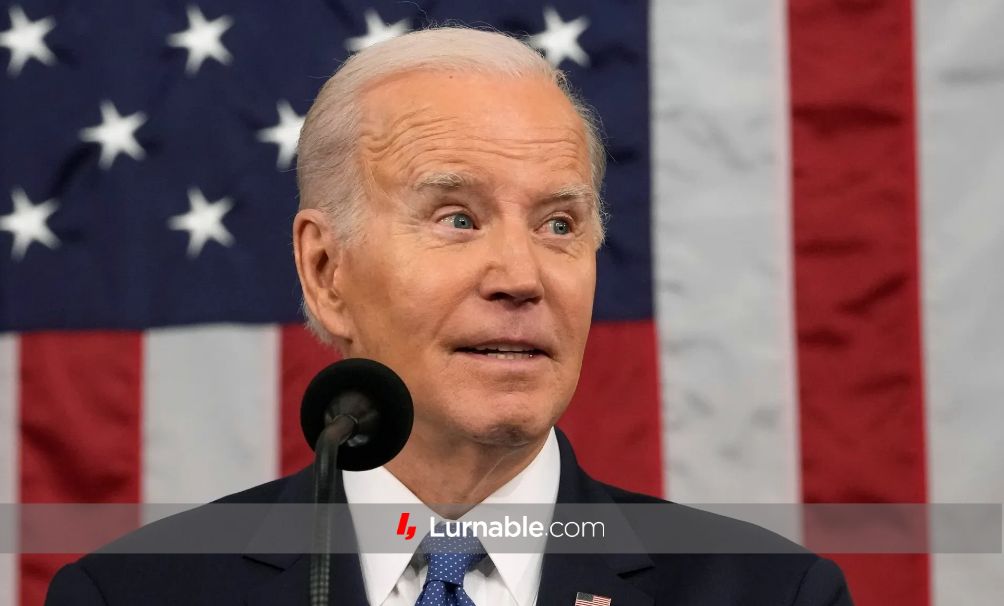Trending >>
Biden Administration Delivers Landmark Student Debt Relief for US Public Servants
22-10-2024

55 Views

Biden Administration Delivers Landmark Student Debt Relief for US Public Servants
Summary:
• Biden administration approves $4.5 billion in student debt cancellation
• 60,000 public servants to benefit from the latest round of relief
• Total number of public servants receiving debt relief exceeds 1 million
• Over $73 billion in loans forgiven through the 2007 Public Service Loan Forgiveness programme
• Reforms address previous issues of poor management and low acceptance rates
• Part of Biden's broader efforts to ease the burden of student debt
• Legal challenges continue to impact other student debt relief initiatives
In a landmark move that underscores the Biden administration's commitment to addressing the student debt crisis in the United States, President Joe Biden has announced the approval of $4.5 billion in student debt cancellation for approximately 60,000 public servants. This latest round of relief marks a significant milestone in the administration's efforts to reform and revitalise the Public Service Loan Forgiveness (PSLF) programme, bringing the total number of public servants who have received debt relief to over one million since Biden took office.
The PSLF programme, established in 2007 under President George W. Bush, was designed to provide debt relief to public sector workers after ten years of service and consistent loan payments. However, the programme has been plagued by poor management and notoriously low acceptance rates, with fewer than 10,000 borrowers receiving relief in the years prior to the Biden administration's reforms.
Education Secretary Miguel Cardona highlighted the stark contrast between the programme's performance under previous administrations and its current state. "Public servants saw their applications fall victim to fine-print technicalities, red tape, accounting errors and a wall of indifference from the Trump administration," Cardona stated. He emphasised that the process has now been fixed and will continue to provide forgiveness to public servants for years to come.
This latest round of debt cancellation is part of a broader strategy by the Biden administration to address the mounting student debt crisis in the United States. With over $73 billion in loans forgiven through the PSLF programme under Biden's tenure, the administration is making significant strides in fulfilling its campaign promise to ease the burden of student debt on American workers.
However, the path to comprehensive student debt relief has not been without obstacles. The administration has faced several legal challenges to its debt relief initiatives, with the Supreme Court rejecting a far-reaching proposal to slash debt for more than 40 million people last year. Alternative plans, including the "SAVE plan" – an income-driven repayment scheme – have also encountered legal hurdles, with temporary halts imposed by federal courts.
The ongoing legal battles underscore the complexity and contentiousness of the student debt issue in American politics. As the 2024 presidential election looms, the fate of these debt relief programmes hangs in the balance, with the potential for significant policy shifts depending on the outcome.
Despite these challenges, the Biden administration remains committed to its debt relief agenda. Vice President Kamala Harris, the Democratic nominee for the upcoming election, has pledged to continue efforts to lower costs, make higher education more affordable, and relieve the burden of student debt.
The impact of this debt relief extends beyond individual borrowers, potentially influencing the broader US economy. By freeing public servants from the burden of student debt, the programme aims to enhance job satisfaction, reduce financial stress, and potentially attract more talented individuals to critical public sector roles.
Critics of the debt relief programmes, including former President Donald Trump, have raised concerns about the cost to taxpayers and the potential for such initiatives to contribute to inflation. However, proponents argue that the economic benefits of a more financially stable workforce outweigh these concerns.
As the debate over student debt relief continues, the success of the PSLF programme under the Biden administration serves as a testament to the potential impact of well-implemented debt forgiveness initiatives. The programme's reforms have transformed it from a source of frustration for many public servants to a reliable pathway for debt relief, potentially influencing future policy discussions on higher education financing and workforce development in the public sector.
The broader implications of this debt relief initiative are significant. By alleviating the financial burden on public servants, the programme may contribute to increased job satisfaction and retention rates in critical public sector roles. This, in turn, could lead to improved public services and a more stable workforce in areas such as education, healthcare, and public safety.
Moreover, the success of the PSLF programme may serve as a model for future debt relief initiatives, potentially paving the way for more comprehensive reforms in the US higher education financing system. As policymakers grapple with the ongoing challenge of making higher education more accessible and affordable, the lessons learned from the PSLF programme's transformation could inform future policy decisions.
The impact of this debt relief extends to the broader economy as well. By freeing up disposable income for thousands of public servants, the programme could stimulate consumer spending and economic growth. Additionally, the reduced financial stress on these workers may lead to improved productivity and job performance, further enhancing the quality of public services.
However, challenges remain. The ongoing legal battles surrounding other debt relief initiatives highlight the complex political and legal landscape surrounding student debt in the United States. As the Biden administration continues to push for broader debt relief measures, it will likely face continued opposition and legal scrutiny.
The future of student debt relief in the United States remains uncertain, with much depending on the outcome of upcoming elections and legal proceedings. However, the success of the PSLF programme under the Biden administration demonstrates the potential for effective policy interventions to address the student debt crisis and support public sector workers.
As the debate over student debt relief continues, it is clear that this issue will remain a key point of discussion in American politics and economic policy for years to come. The ongoing efforts to reform and expand debt relief programmes will likely shape the future of higher education financing and workforce development in the United States, with far-reaching implications for millions of Americans and the broader economy.
Frequently Asked Questions (FAQs):
1. Q: Who is eligible for the Public Service Loan Forgiveness programme?
A: Full-time employees of government organisations or non-profit organisations who have made 120 qualifying monthly payments on their Direct Loans are eligible.
2. Q: How many public servants have received debt relief under the Biden administration?
A: Over one million public servants have received debt relief since Biden took office.
3. Q: What changes has the Biden administration made to the PSLF programme?
A: The administration has streamlined the application process, expanded eligibility, and addressed issues of poor management and low acceptance rates.
4. Q: How much student debt has been forgiven through the PSLF programme under Biden?
A: Over $73 billion in loans have been forgiven through the programme under the Biden administration.
5. Q: Are there any income requirements for the PSLF programme?
A: There are no specific income requirements, but borrowers must be on an income-driven repayment plan to qualify.
6. Q: How long do public servants need to work before becoming eligible for debt forgiveness?
A: Public servants need to make 120 qualifying monthly payments while working full-time for an eligible employer, which typically takes 10 years.
7. Q: What types of loans are eligible for forgiveness under the PSLF programme?
A: Only Direct Loans are eligible for forgiveness under PSLF. Other federal student loans may become eligible if consolidated into a Direct Consolidation Loan.
8. Q: Can private student loans be forgiven under the PSLF programme?
A: No, private student loans are not eligible for forgiveness under the PSLF programme.
9. Q: What happens if a borrower leaves public service before making 120 qualifying payments?
A: Borrowers who leave public service before making 120 qualifying payments will not be eligible for forgiveness under PSLF, but may explore other repayment options.
10. Q: How can eligible public servants apply for the PSLF programme?
A: Eligible public servants can apply for PSLF by submitting the PSLF form, which includes employment certification, to the U.S. Department of Education's loan servicer.
----
As the landscape of student debt relief continues to evolve in the United States, staying informed about the latest developments and opportunities is crucial. Lurnable's premium membership subscription offers exclusive insights, expert analysis, and comprehensive resources to help you navigate the complex world of student loans and debt relief programmes.
Our advisory services can provide personalised guidance on how to maximise your chances of qualifying for debt relief programmes like PSLF, as well as strategies for managing your student loans effectively. Whether you're a current student, recent graduate, or long-time public servant, Lurnable's expertise can help you make informed decisions about your financial future.
Don't miss out on important updates and opportunities in the ever-changing world of student debt relief. Join our WhatsApp channel today to receive instant notifications about new debt relief initiatives, changes to existing programmes, and expert tips for managing your student loans. With Lurnable, you'll have the knowledge and tools you need to take control of your financial future and make the most of available debt relief options.
----
For official information and updates on the Public Service Loan Forgiveness programme and other student debt relief initiatives, visit the U.S. Department of Education's Federal Student Aid website at studentaid.gov.
Top Stories
-
Teenage Depression: Symptoms, Causes, and Treatment Options
22-10-2024
-
Coroner's Warning: SEND Confusion Poses Suicide Risk for UK Students
22-10-2024
-
Biden Administration Delivers Landmark Student Debt Relief for US Public Servants
22-10-2024
-
Unconventional But Promising Careers Parents Usually Overlook
21-10-2024
-
European Medical Schools Unite to Tackle Climate-Driven Health Challenges
21-10-2024
-
IIT Madras Expands Global Footprint with Groundbreaking Research Centre in Dubai
21-10-2024
TAG CLOUD
Exam Guides
-
Singapore: Best destination to study medicine in Asia
01-01-1970
-
BMAT: Admission Exam for Medical, Biomedical, Dental, and Veterinary Degrees
01-01-1970
-
Lithuania: Popular Medical Education Destination for International Students
01-01-1970
-
UCAT UK: Application Process for UK Medical and Dental Programmes
01-01-1970
-
UCAT Australia: Application for Australia Medical and Dental Courses
01-01-1970
-
GAMSAT Ireland: Test for Medicine and Related Courses in Ireland
01-01-1970
Related Articles
Embark on Your Interior Design Journey: Unleash Your Creativity with the Portfolio Short Course from the University of Arts London
08-04-2024
Ignite Your Interior Design Potential: Immerse in UAL's Portfolio Short Course! Enhance skills through hands-on learning, industry insights, and a global perspective.
THE LEARNING EDGE- NEWSLETTER BY lurnable.com- ISSUE 2
08-04-2024
With a fresh week ahead, we have the latest in academic programmes, scholarship opportunities, careers, and news for our followers. Read more.
Leveraging Bloom's Taxonomy for Outstanding Academic Success
25-06-2024
Discover how to leverage Bloom's Taxonomy to identify your cognitive strengths, decode your learning style, and achieve outstanding academic success. Unlock your full potential with our comprehensive guide.
GUIDANCE FOR INTERNATIONAL STUDENTS WHO WANT TO STUDY DENTISTRY IN CANADA
08-04-2024
This article will focus on the process of applying to study for a dental degree in Canada.
Most Popular
UCAS Personal Statement Revisions: What is Changing, Why and When
01-06-2024
Find out everything you need to know about the major UCAS personal statement reforms coming in 2025. Get details on the new question format, rationale, and implementation timeline.

Choices with Clarity: Mental Models for Shortlisting UK Universities and Courses
10-06-2024
Explore powerful mental models and decision-making frameworks to guide your selection of the best 5 universities and courses for your undergraduate degree in the UK. Our comprehensive guide provides invaluable insights and strategies to align your ch

Top Companies Offering the Highest Salaries for Entry-Level Cyber Security Analysts
28-08-2024
Learn which companies in the UK offer the highest salaries for entry-level cyber security analysts, including job roles, skills required, and career prospects.

The Crumbling Concrete Crisis in UK Schools - Long-Term Impacts and Calls for Action
03-09-2024
The discovery of Reinforced Autoclaved Aerated Concrete (RAAC) in hundreds of schools across the United Kingdom has sparked a crisis that threatens to have long-lasting impacts on the education sector. As we approach the 2024-2025 academic year, the













